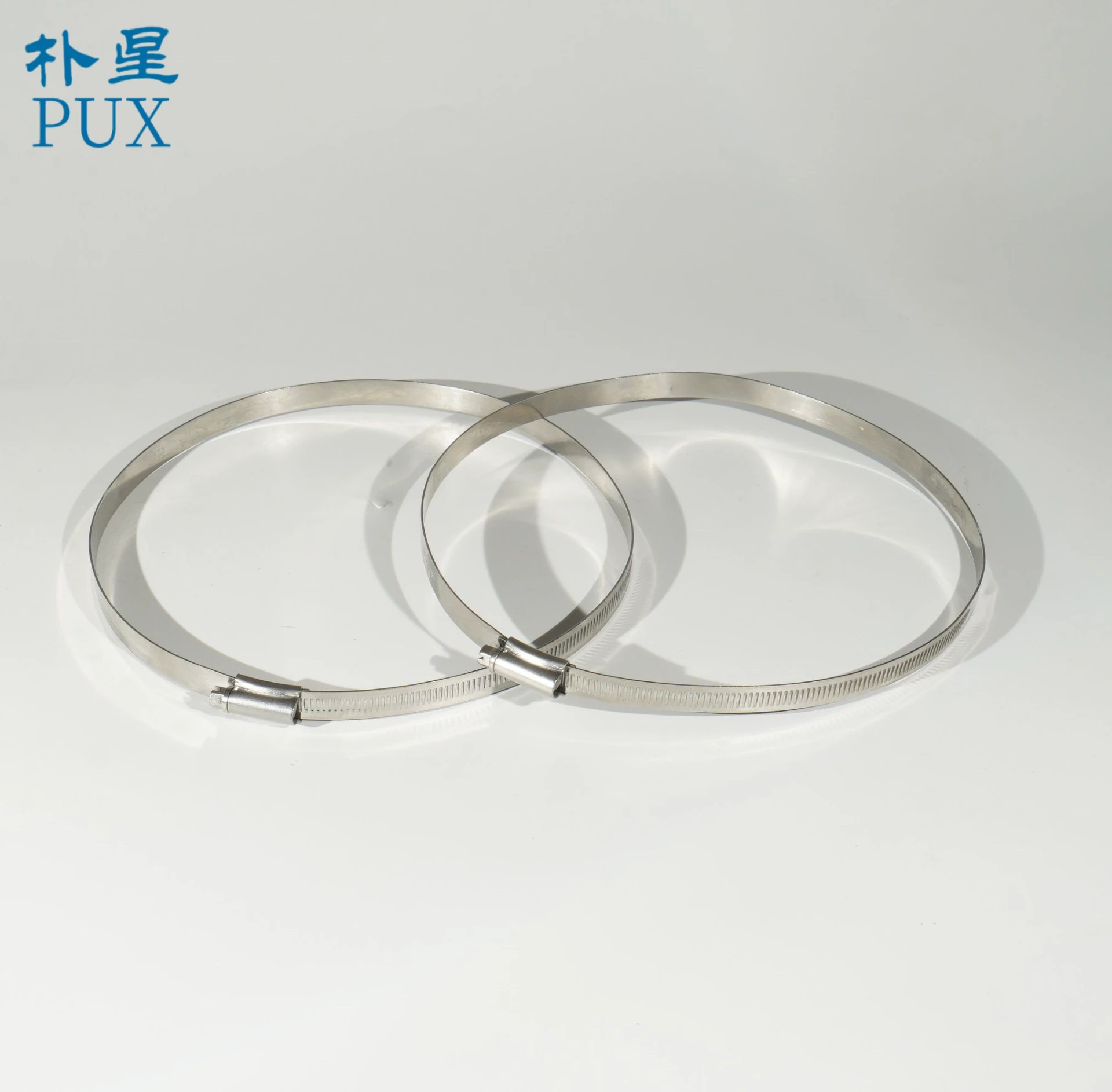- Phone:+86-17331948172 +86-0319-8862898
- E-mail: inquiry@puxingclamp.com
Nov . 21, 2024 21:07 Back to list
hose clamp
The Versatility and Importance of Hose Clamps
Hose clamps are ubiquitous components in both industrial and household environments, serving as a crucial element in securing hoses to fittings and preventing leaks. Although they are often overlooked, these simple devices play a significant role in ensuring the safety and efficiency of various systems, from automotive engines to household plumbing. This article explores the types, applications, and benefits of hose clamps, highlighting their essential nature in everyday functions.
Types of Hose Clamps
Hose clamps come in various designs, each tailored to specific applications. The most common types include
1. Worm Gear Clamps These are characterized by a band with a screw mechanism that can be adjusted to tighten or loosen around a hose. They are highly versatile and can be used for different sizes and types of hoses.
2. Spring Clamps These clamps employ a spring mechanism to exert pressure on the hose. They are easily removable and are often used in applications where quick assembly and disassembly are required, such as in automotive and plumbing sectors.
3. T-Bolt Clamps Typically used for higher pressure applications, T-bolt clamps feature a T-shaped bolt that provides enhanced grip and torque. They are ideal for heavy-duty hoses used in industrial machinery and automotive performance.
4. Plastic Clamps Lightweight and resistant to corrosion, plastic clamps are suitable for non-pressurized applications. They are commonly used in irrigation systems and other outdoor settings.
Each type of hose clamp serves its unique purpose, demonstrating the versatility and adaptability of this indispensable tool.
Applications of Hose Clamps
Hose clamps are employed across a wide range of industries, illustrating their importance in both critical and everyday applications. Below are some key areas where hose clamps are essential
1. Automotive In the automotive industry, hose clamps secure hoses that transport fluids like coolant, oil, and fuel. A secure connection is vital to prevent leaks that could lead to engine failure or hazardous driving conditions.
hose clamp

2. Plumbing In household plumbing, hose clamps hold hoses that connect sinks, faucets, and washing machines. They ensure a tight seal to prevent leaks, which can cause water damage and increase utility bills.
3. Agriculture Hose clamps are widely used in agricultural applications, particularly in irrigation systems. They secure hoses that deliver water to crops, helping maintain efficient water management essential for farming.
4. HVAC Systems In heating, ventilation, and air conditioning systems, hose clamps are critical for securing ductwork and hoses. Their reliability ensures that air is delivered efficiently and effectively throughout a building.
5. Marine Applications In boats and marine equipment, hose clamps are crucial in preventing leaks that could lead to catastrophic consequences. They help secure hoses in bilge pumps and fuel lines, ensuring safe and efficient operation.
Advantages of Using Hose Clamps
The advantages of hose clamps extend beyond just securing hoses. Some benefits include
- Simplicity and Ease of Use Hose clamps are easy to install and remove, allowing for quick maintenance or replacement of hoses without the need for specialized tools. - Cost-Effectiveness They are relatively inexpensive, making them an affordable solution for various applications without compromising reliability.
- Durability Made from materials such as stainless steel, plastic, or aluminum, hose clamps are designed to withstand harsh environments, resisting corrosion and wear.
- Flexibility Different types of hose clamps can accommodate a wide range of hose sizes and materials, ensuring versatility in application.
Conclusion
In summary, hose clamps may seem like simple components, but their significance cannot be overstated. From preventing fluid leaks to ensuring the efficient operation of machinery, these devices are integral to a plethora of applications across multiple industries. As technology advances, the design and functionality of hose clamps continue to evolve, maintaining their status as a vital tool in both professional and DIY projects. Understanding their importance and proper usage can lead to better maintenance practices and a longer lifespan for the systems they support.
-
Large Stainless Steel Adjustable American Type Hose Clamp - Hebei Pux Alloy Technology Co., Ltd|Corrosion Resistance&High Breaking Torque
NewsJul.30,2025
-
Large Stainless Steel Adjustable American Type Hose Clamp - Hebei Pux Alloy Technology Co., Ltd
NewsJul.30,2025
-
Large Stainless Steel Adjustable American Type Hose Clamp - Hebei Pux Alloy Technology Co., Ltd|Corrosion Resistance&Industrial Applications
NewsJul.30,2025
-
Large Stainless Steel Adjustable American Type Hose Clamp-Hebei Pux Alloy Technology Co., Ltd|Corrosion Resistance, Adjustable Design
NewsJul.30,2025
-
Large Stainless Steel Adjustable American Type Hose Clamp - Hebei Pux Alloy Technology Co., Ltd. | High Breaking Torque & Corrosion Resistance
NewsJul.30,2025
-
Large Stainless Steel Adjustable American Type Hose Clamp - Hebei Pux Alloy Technology Co., Ltd
NewsJul.30,2025




